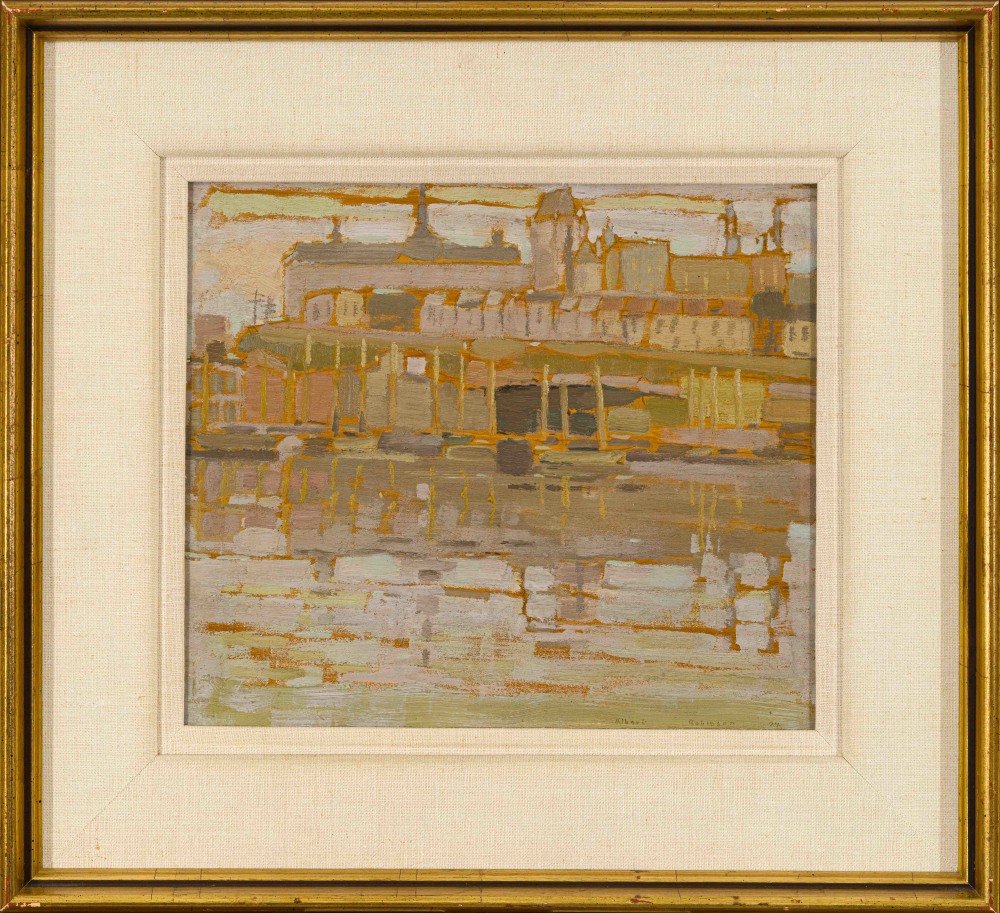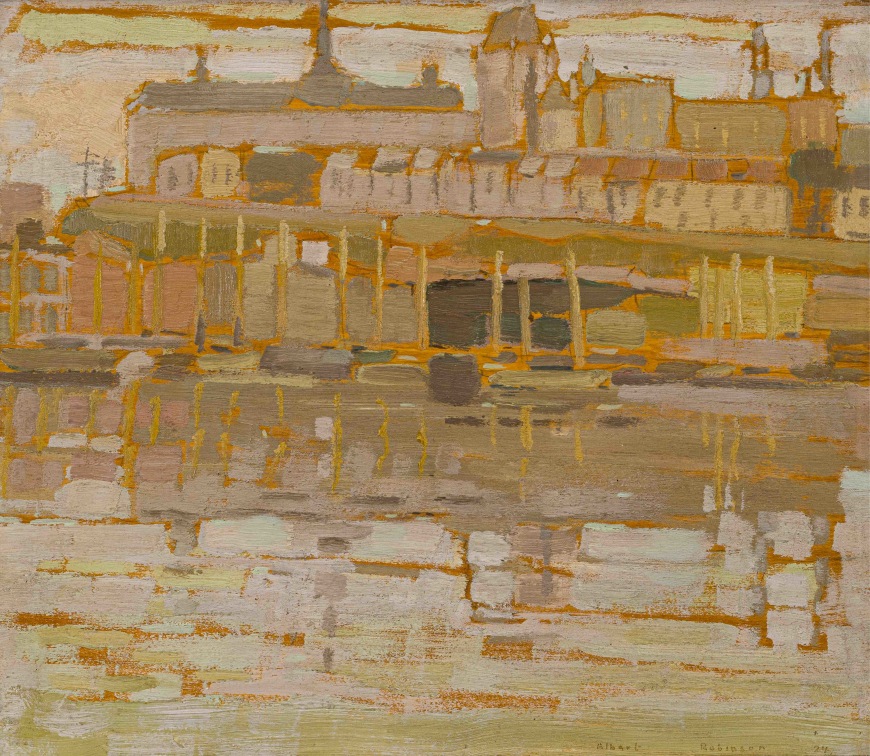-
Artworks
Albert H. RobinsonQuébec Harbour, 19241881-1956signed, ‘ Albert Robinson 24’ (lower right); titled, inscribed and signed, ‘Quebec Harbour/70.00 + 15 for frame/aHR’ (verso, upper left); inscribed, dated and signed, ‘Painted/ 1924/ aHR’ (verso, left, circled); inscribed and signed, ‘Property/ of my wife/ Marion E Russel Robinson/ Albert H. Robinson’ (verso, on artist label)11 1/8 x 13 inThis painting is presently on view at our Montreal gallery
28.3 x 33 cmSoldInscriptions
Oil on panelProvenance
Studio Six Art Gallery, Toronto
Imperial Oil Limited
Sotheby’s /Ritchies, Important Canadian Art, 29 May 2006, lot 116
Galerie Walter Klinkhoff Inc., Montreal
Property of a Distinguished Montreal Collector
This work epitomizes the "modernism" of which he was one of the Canadian pioneers: the rejection of traditional norms, Robinson experiments with colour and composition, moving away from realism, narratives, and typical treatments of artistic subjects to favour instead bold chromatic juxtaposition and simplification of form. Robinson's modern use of colour in Québec Harbour, 1924 paints the emotion of early evening over the harbour rather than the image: sculptural buildings grouped around the Seminary and, the stillness, the cold, and the solitude of a lone artist.
Robinson confided to my father that he, “simply could not share the philosophy of the others [in the Group of Seven]” and “did not feel compelled to paint the remote wilderness of Canada, but preferred those inhabited places, particularly the Lower Saint-Lawrence region.” Robinson’s interest in the location of a port stems from his earliest years as an aspiring artist living in Montreal. In the summer around 1910, Robinson exercised his connections whereby his cousin, Robert Aiken, harbour paymaster, would allow him to paint the grain elevators, boats and docks without being disturbed.
Albert Robinson R.C.A. (1881-1956) is one of Canada’s premier artists of the Group of Seven and the Beaver Hall Group modernist era, and appropriately celebrated in the Montreal Museum of Fine Arts’ exhibition 1920s Modernism in Montreal: The Beaver Hall Group, which finished in January 2016. In addition to having exhibited alongside both Groups, Beaver Hall & Group of Seven, Robinson associated with other of the foremost artists of his day including Robert Pilot, Edwin Holgate, Clarence Gagnon, Randolph S. Hewton, Horne Russell, Maurice Cullen, the Des Clayes sisters (Berthe, Alice and Gertrude) and Dr. Fred Banting. [1] One needs also to mention Marc-Aurèle de Foy Suzor-Coté, who for a period of time had a studio adjacent to Robinsons and who he could hear sing while he painted. The tragedy of his mature artistic career is in its brevity when a heart attack in 1933 and crippling arthritis prohibited Robinson from ever painting again. As a result, Robinson’s most accomplished paintings are very much within the period defined by the Group of Seven era.
Thomas R. Lee in his monograph on Robinson refers to him as “a painter’s painter”. [2] My father, Walter Klinkhoff, without reservation, claimed Robinson was his favorite Canadian artist. Robert Pilot, a distinguished artist in his own right and a President of the Royal Canadian Academy of the Arts, also declared Robinson as his favourite Canadian artist.
______________________
Footnotes:
[1] Jennifer Watson, Albert H. Robinson: The Mature Years (Kitchener: The Kitchener-Waterloo Art Gallery, 1982), 19.
[2] Thomas R. Lee, The Painter's Painter (1956), in Walter Klinkhoff Gallery, Retrospective Exhibition: Albert H. Robinson (1881-1956) (Montreal: Walter Klinkhoff Gallery, 1994), 6.













